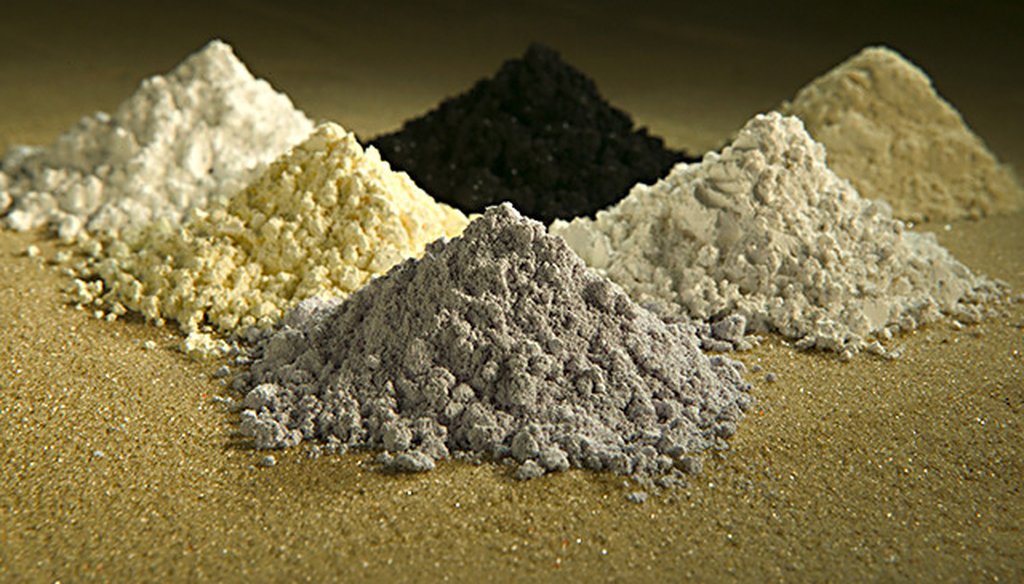

Our only agenda is to publish the truth so you can be an informed participant in democracy.
We need your help.


Rare earth elements, clockwise from top left: gadolinium, praseodymium, cerium, lanthanum, neodymium and samarium. (Wikimedia Commons)
Sen. Joe Manchin, D-W.Va., raised concern about the United States' dependence on foreign countries for mineral needs in an opinion-editorial this fall.
Manchin wrote an op-ed with Sen. Lisa Murkowski, R-Alaska, that was published in the Parkersburg News and Sentinel on Oct. 14, 2018. The op-ed touts several bipartisan efforts by Manchin and Murkowski on national energy policy.
In a section detailing a joint amendment to the National Defense Authorization Act that the senators submitted this year, Manchin and Murkowski wrote that "we import 50 percent of at least 50 mineral commodities each year, including 100 percent of 21 of them."
Is that correct?
We were able to trace Manchin’s claim back to a report published by the U.S. Geological Survey published in January 2018. The report includes figures showing how much the United States relies on imports for individual commodities and where these imports come from.
This report, published annually, notes that in 2017, "imports made up more than one-half of the U.S. apparent consumption for 50 nonfuel mineral commodities, and the United States was 100 percent import-reliant for 21 of those."
Here’s a chart from the report summarizing the critical minerals, the percentage of imports, and the countries of origin.
The chart confirms that for 50 minerals, at least half are imported, and for 21, the U.S. supply is entirely imported.
Some of the commodities that the U.S. most heavily imports include arsenic, asbestos, and gemstones. China and Canada were the heaviest suppliers of mineral commodities to the United States in 2017, the report said.
We found only one thing to quibble about the statement.
Manchin and Murkowski would have been more accurate if they had put the phrase "at least" in a different place, by writing that the United States imports "at least 50 percent of 50 mineral commodities each year, including 100 percent of 21 of them."
In his joint op-ed with Murkowski, Manchin wrote that the United States imports "50 percent of at least 50 mineral commodities each year, including 100 percent of 21 of them."
The point is well-taken, though the language is a bit garbled. It’s actually "at least 50 percent of 50 mineral commodities."
We rate the statement Mostly True.
Joe Manchin, Parkersburg News and Sentinel op-ed, Oct. 14, 2018
U.S. Geological Survey, "Mineral Commodity Summaries 2018," Jan. 31, 2018
In a world of wild talk and fake news, help us stand up for the facts.
